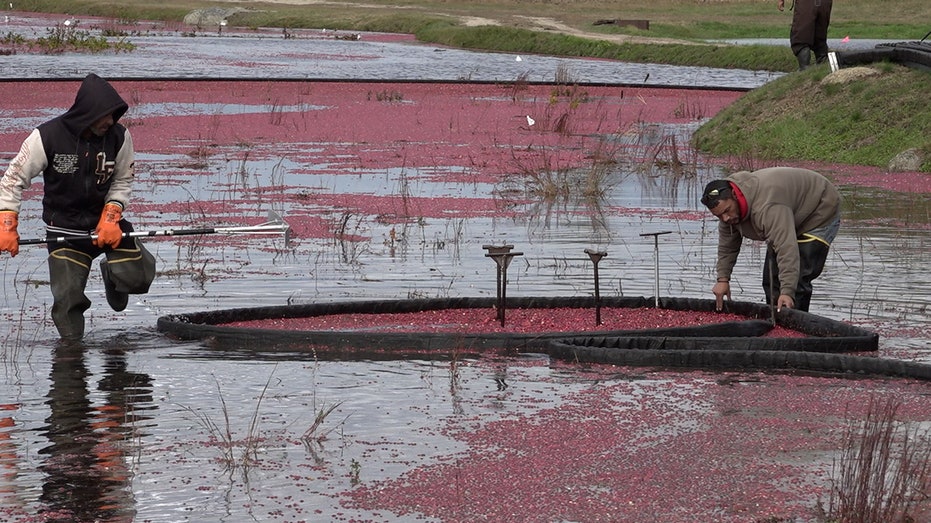UPDATE: Massachusetts cranberry farmers are facing a crisis as rising production costs force many to retire their bogs. This alarming trend is reshaping the landscape of the Bay State’s vital cranberry industry, which ranks second in production nationwide.
CARVER, MASSACHUSETTS – The peak cranberry harvesting season is underway, but economic pressures are pushing farmers to sell their land. Jarrod Rhodes, a fourth-generation cranberry farmer, revealed that growing costs and adverse weather conditions are making production increasingly unfeasible. He stated, “It kind of all adds up, and it becomes a lot more expensive to grow here versus Wisconsin or Canada.”
Massachusetts is crucial to the U.S. cranberry market, contributing $1.7 billion to the state economy and supporting nearly 6,400 jobs, according to the Cape Cod Cranberry Growers’ Association. However, rising labor, utility, and real estate costs are squeezing profits. “Massachusetts is an expensive place to do business,” said Karen Cahill, deputy executive director of the Association.
Rhodes, who produces 50,000 barrels (or 5 million pounds) of cranberries annually, is now opting for a state program that allows him to retire and restore over 30 acres of older bogs. “The property was in distress and it needed to be rebuilt,” he explained. This initiative is part of the state’s Division of Ecological Restoration (DER) efforts to convert retired bogs into native wetlands.
With the Eel River Headwaters Restoration project already underway, DER aims to restore 1,000 acres in the next 10 to 15 years. This environmentally friendly approach not only protects the land but also provides financial relief to farmers like Rhodes. “We decided to not rebuild this but take the money and buy a better property,” he said.
Krista Haas of DER emphasized the importance of legal protections for restored lands. “This places a deed restriction on the land, which restricts certain activities such as development,” she noted. The Rhodes’ bog restoration is set for completion in spring 2026.
As the industry faces these mounting pressures, many growers are contemplating similar paths. With younger generations showing less interest in farming, the future of cranberry production in Massachusetts hangs in the balance. “Some are nearing retirement, and younger generations are not as interested,” Rhodes lamented.
The transition to wetlands not only aids the environment but also offers farmers a potential avenue for sustainable income, creating a “green exit strategy.” As more farms join this initiative, the impact on the local economy and ecosystem will be closely monitored.
This urgent situation highlights the need for immediate action to support Massachusetts cranberry farmers facing extreme challenges. Stay tuned for more updates as this story develops.





































































